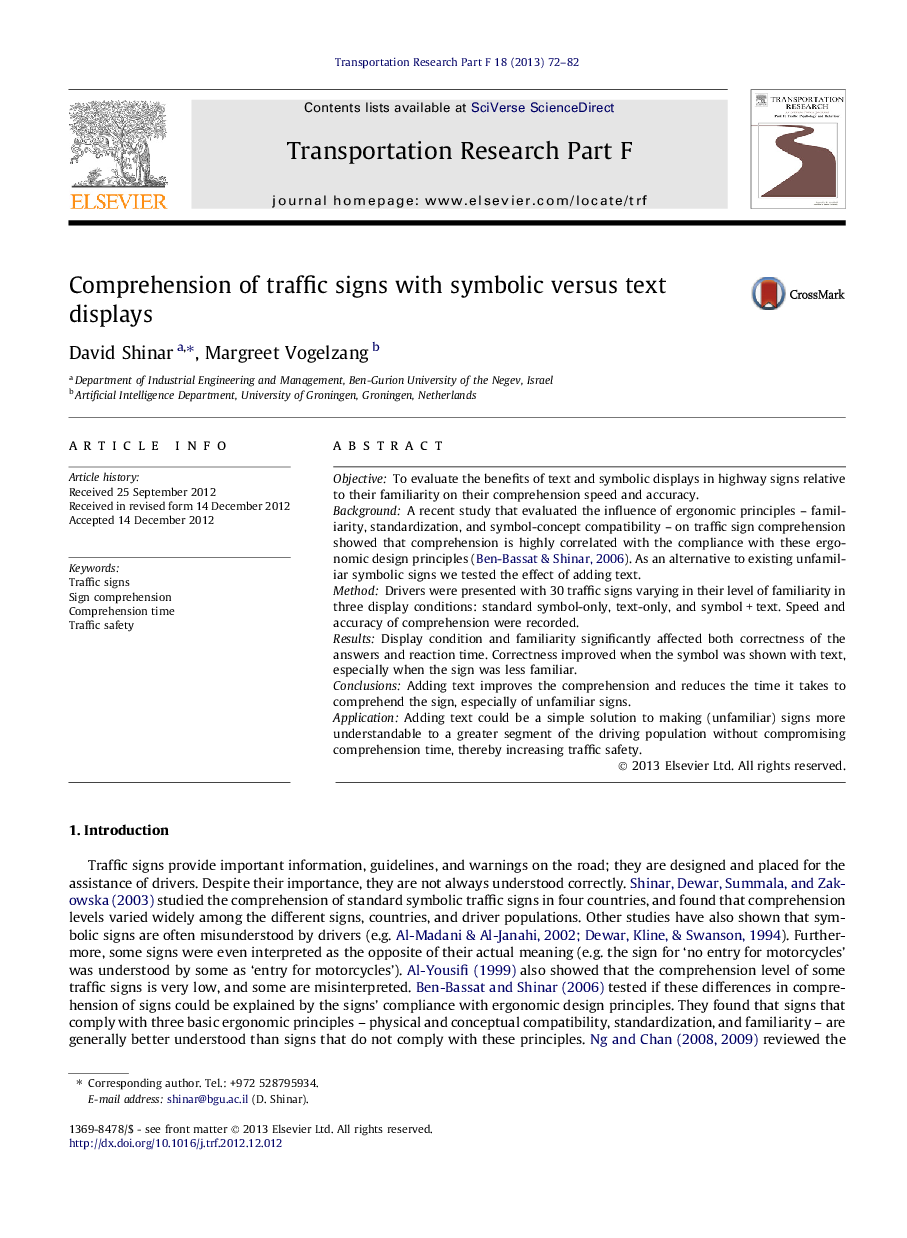| کد مقاله | کد نشریه | سال انتشار | مقاله انگلیسی | نسخه تمام متن |
|---|---|---|---|---|
| 897822 | 1472462 | 2013 | 11 صفحه PDF | دانلود رایگان |

ObjectiveTo evaluate the benefits of text and symbolic displays in highway signs relative to their familiarity on their comprehension speed and accuracy.BackgroundA recent study that evaluated the influence of ergonomic principles – familiarity, standardization, and symbol-concept compatibility – on traffic sign comprehension showed that comprehension is highly correlated with the compliance with these ergonomic design principles (Ben-Bassat & Shinar, 2006). As an alternative to existing unfamiliar symbolic signs we tested the effect of adding text.MethodDrivers were presented with 30 traffic signs varying in their level of familiarity in three display conditions: standard symbol-only, text-only, and symbol + text. Speed and accuracy of comprehension were recorded.ResultsDisplay condition and familiarity significantly affected both correctness of the answers and reaction time. Correctness improved when the symbol was shown with text, especially when the sign was less familiar.ConclusionsAdding text improves the comprehension and reduces the time it takes to comprehend the sign, especially of unfamiliar signs.ApplicationAdding text could be a simple solution to making (unfamiliar) signs more understandable to a greater segment of the driving population without compromising comprehension time, thereby increasing traffic safety.
► Symbolic images used for highway traffic signs are not always appropriate.
► Familiarity, standardization, and compatibility improve comprehension.
► Violations of these ergonomic principles of design reduce comprehension.
► In such cases a text improves sign comprehension and reduces comprehension time.
Journal: Transportation Research Part F: Traffic Psychology and Behaviour - Volume 18, May 2013, Pages 72–82